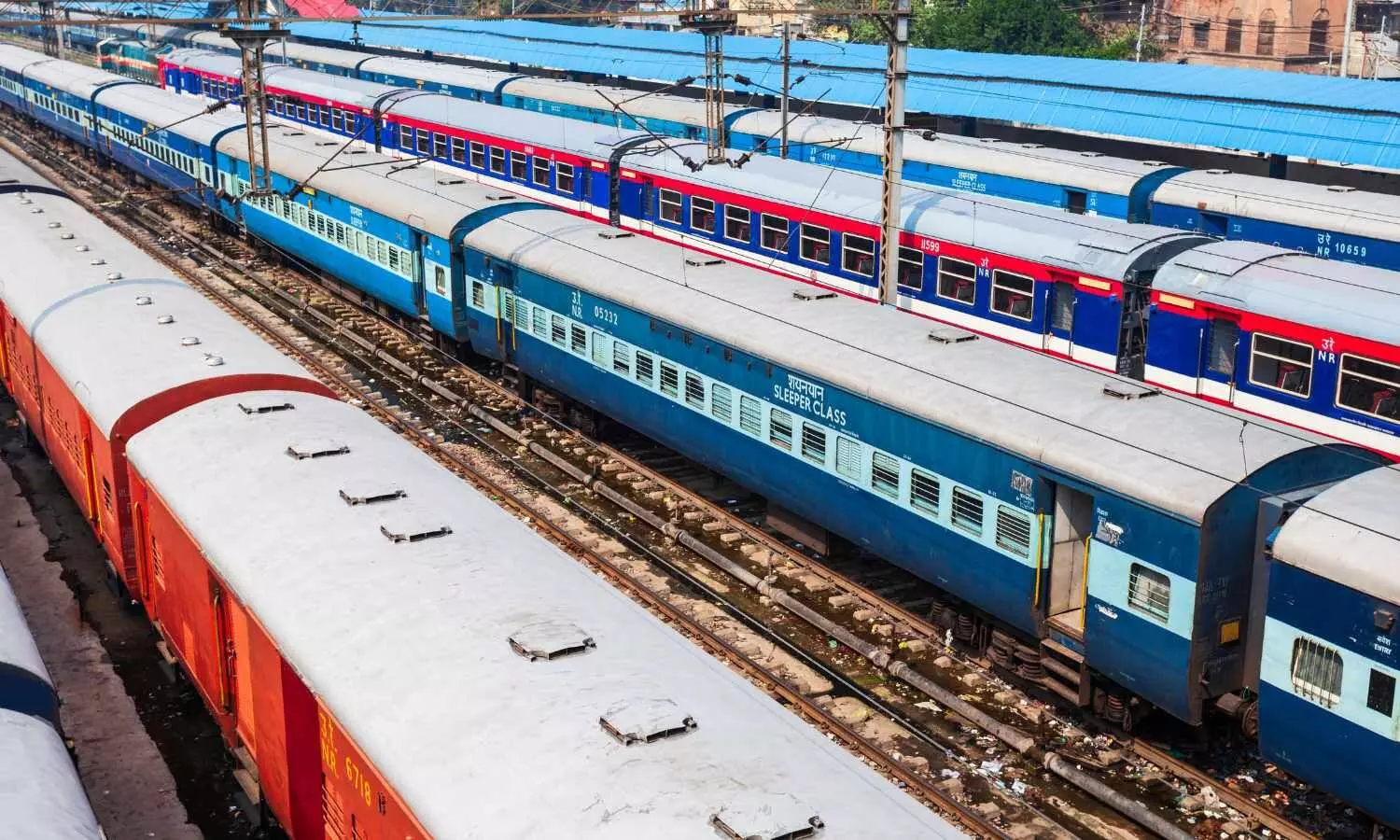Emerging Indian Railways Driving India’s 5 Trillion Dollar Economy
Indian Railways is emerging as a major growth engine, boosting connectivity, logistics efficiency, and infrastructure to support India’s journey toward a $5 trillion economy.
Emerging Indian Railways Driving India’s 5 Trillion Dollar Economy

Emerging Indian Railways is driving India's push to become a $5 trillion economy through strategic modernization, focusing on projects like freight corridors, high-speed rail, and station redevelopment to boost connectivity and efficiency. These developments are crucial for expanding trade, facilitating the movement of goods, and improving passenger mobility, which is essential for national integration and economic growth.
As India advances toward a $5 trillion economy, the modernization of its railways is no longer a matter of convenience — it is a strategic necessity. The focus on electrification, station redevelopment, semi-high-speed trains, and digital logistics systems is transforming not only passenger mobility but also industrial connectivity.
Moreover, the railways are becoming a major contributor to sustainability. With record electrification and adoption of renewable energy sources, Indian Railways aims to achieve net-zero carbon emissions by 2030 — a feat unparalleled by any major national railway system in the world.
India is witnessing a historic infrastructure boom underpinned by an unprecedented government spending push. In the fiscal year 2023–24, capital investment in infrastructure reached a record of approximately $120 billion, marking a sharp increase aimed at transforming the nation’s highways, railways, and logistics networks. This massive outlay – about 33% higher than the previous year’s allocation – underscores the government’s strategy of using infrastructure development to fuel economic growth and job creation across all regions.
The Union Budget for 2023–24 dramatically ramped up capital expenditure on infrastructure to 3.3% of India’s GDP, as a central pillar of the country’s growth strategy. This is nearly three times the infrastructure outlay of just a few years ago, reflecting a “big push” in public investment.
The government also extended support to states by nearly $15 billion in 50-year interest-free loans for infrastructure, ensuring that even local and regional projects get a boost. Major programs like PM Gati Shakti – a national master plan for integrated infrastructure – have been launched to coordinate this spending spree, breaking departmental silos and fast-tracking critical projects. Overall, the record investment has set the stage for an infrastructure-led economic rejuvenation, with officials identifying over 100 critical transport projects (spanning ports, roads, rail and more) to be executed on priority.
India’s railway network is undergoing its most significant upgrade in decades, supported by a $2.7 billion budgetary outlay in FY 2023–24 – the highest ever for Indian Railways. This rail capital investment is about nine times the outlay in 2013–14, enabling a slew of projects to enhance capacity, safety, and speed. The national transporter has introduced new Vande Bharat Express trains, which are indigenously built semi-high-speed trains connecting major cities with significantly reduced travel times. Dozens of these modern trains are now running on routes across India, offering world-class amenities and cutting inter-city travel durations. In parallel, the Railways has electrified broad-gauge routes at a record pace, aiming for 100% electrification to ensure faster and cleaner train operations.
Track laying and doubling works have accelerated – about 25,800 km of rail track work was completed between 2014 and 2023, a big jump over the previous decade. This includes new lines that have brought rail connectivity to remote regions for the first time: notably, since 2014, the railway map was extended to states in India’s Northeast such as Meghalaya, Arunachal Pradesh, Manipur, and Mizoram, integrating them into the national network
The rail infrastructure push also features the ongoing construction of the Dedicated Freight Corridors (DFC), a pair of freight-only mega railway lines across the country. The Eastern and Western DFCs, nearing completion, will drastically increase freight capacity and allow goods trains to move at higher speeds from ports and industrial zones to the hinterland. By segregating freight and passenger traffic, these corridors free up existing rail lines for more passenger trains like the Vande Bharat. Indian Railways is additionally modernizing hundreds of stations into airport-like transit hubs and deploying technologies such as automatic signaling and train collision avoidance systems for safety. All these efforts are expected to not only improve the passenger experience and freight efficiency but also create large numbers of jobs in railway construction, manufacturing (locomotives, coaches), and operations.
The coming years will likely see the benefits multiply: smoother connectivity, robust supply chains, and thriving regional development, all contributing to India’s goal of becoming a $5 trillion economy. In the meantime, the visible transformation of highways, railways and logistics is delivering better quality of life for millions of citizens – from easier commutes to new job prospects – truly signaling that India’s infrastructure revolution is in full swing.

